Setting off
After a standard, but perfectly acceptable Toyoko Inn breakfast buffet, we set off in search of our hire car, and were pretty soon introduced to our very own boxy car, a Toyota Roomy. There are SO many models of cars here that we don’t have in Australia. On Awaji, our car was a Toyota Vitz.
While talking cars, now is a good time to mention Japanese speed limits. Their speed limits are generally a little lower than ours – particularly on the freeways where so far we’ve mainly seen 70 or 80 kph, though we have seen 100 kph which is apparently the norm on the bigger freeways. The thing is, though, that the Japanese seem to pay little attention to the limits and drive much faster. So far we’ve seen no speed cameras (though they apparently exist) nor any reference to speeding. So, I went searching and found this for gaijin on a blog:
When driving in Japan, there is usually a bit of leniency when it comes to the speed limit. Most cameras and police cars only take note of people speeding well beyond the indicated limit. Most Japanese websites say that an excess of 20 kilometers per hour is still below the threshold, but it can vary.
Pretty much what we thought …
Anyhow, we admit to having had a little concern about our chosen route for today, given the looks people gave us – the Toyota Rent-a-Car fellow and one we met at our first Japanese truckstop. The former said, with a surprised look in his eye as he set the GPS, “mountains, very windy.” We knew that. I was concerned he would forbid us taking Roomy there, but he didn’t! The next one just said “take care”! Oh dear. I was starting to think that we were foolhardy, that we’d be driving for kilometres and kilometres along those really narrow country lanes we met in Awajijima! But it was ok. Mostly, it was just like driving down the Clyde 50 years ago and for a couple of hours. There were those vicious ditches every now and again but!
On the road
Now, to the day. We set off, heading east to Hashimoto, but before getting there, driver Len needed coffee so we pulled into our first Japanese freeway truck stop or service centre. It wasn’t serving coffee untl 10am! And it wasn’t that time yet, but there was a woman outside selling fresh, warm, azuki-filled mochi. Yum! We love those. And there were those amazing Japanese vending machines that dispense everything from cold sports drinks to hot coffees. We wanted the latter. But … then the challenges. We found the coffee alright, but which kanji meant sugar (for Sue) and which milk (for Len). We tried asking another man at the machine but he wasn’t confident enough to engage. Next minute, a fellow around our age came running over offering to help. He pointed us to the right buttons and out came the coffee.
We sat down in the appointed area to drink it, when suddenly he appeared again, offering us a map. We got talking and he, as mentioned above, was bemused by our route. He seemed very concerned and wanted to tell us something. Len got out Google translate for him to talk into, and what he said was that there was a famous long pedestrian suspension bridge in the region. Len wanted to see it, and it turned out to be along our chosen road, a little before our planned destination What luck – and, we had now an excuse to travel our chosen route. Surely it couldn’t be that bad.
There was, however, another potential spanner in our adventurous driving and sightseeing works – that forecast rain! Local forecasts suggested it would come in around noon. We decided to risk it: would it really rain, and if it did, how much would it rain? We soldiered on, and despite some minor GPS conniptions, arrived at the suspension bridge around 11am.
Tanize Suspension Bridge
This bridge, at nearly 298 metres long (and 54 metres high), is one of the longest pedestrian suspension bridges in Japan. lt was built in 1954 and crosses the Totsukawa River, connecting the villages of Uenochi and Tanize. It has a wooden plank floor, edged with wire mesh. It is clearly a popular tourist attraction and we crossed it, bouncing and shaking along with many Japanese. It’s not quite what I’d call fun, but we do enjoy seeing what the local tourists do. it was free though there was a parking charge of Y5OO.
After the bridge walk, we were in need of some fortifications, but the restaurant at the bridge entrance was one of those ticket machines where you choose your dish, pay your money, and a little later a server brings you food. The problem was of course there was only kanji and katakana, so what were the options? We decided to choose two dishes for Y700 and hope one of them would suit me well enough. We momentarily forgot about using the Google translate app with its camera functions. Once sitting down, we did so.
Anyhow, win! We played Ticket machine Roulette and I got fried rice. Not a ramen or udon noodle in sight! Len’s ticket was translated as “Parent and child”, so we wondered what on earth was he to get? It turned out to be a chicken and egg don (presumably the chicken is the parent and the egg the child) together with a small plate of pickles.
Hongu Taisha
Then it was back on the road for our main tourist destination of the day, but by then, the rain had started, right on schedule. The driving was demanding. Not dangerously so, but enough that a coffee break was needed. Google Maps showed a place coming up called Coffee Pit, so we decided to try it. It was a cute little wooden building overlooking the Totsukawa (the same river the Tanize Bridge crossed). It had maybe 8 or so tables, and so we ordered coffee, and some Butter Toast. We’ve never seen such a thick slice of toast before. It was, maybe, 3 cms thick. And oh so soft.
And then the penultimate haul of the day to Hongu Taisha. It is one of the Kumano region’s three famous shrines, the other two being Hayatama Taisha and Nachi Taisha. It also serves as the head shrine of over 3000 Kumano shrines across Japan. However, it was raining, raining, raining, so we thought we’d just check it out quickly and come back another day. The first stop – and the one we checked out – was its original location at Oyu no Hara. In 1889, after it was damaged by flood, the shrine buildings were moved to a new site a kilometre away. We’ll check that out another day.
However, we enjoyed what we did see, albeit involved much sloshing across very damp ground with a steady number of other pilgrims and tourists (and using the loan umbrellas so often provided by businesses etc in Japan for their customers use). What we saw was: the biggest torī in the world (33m) high which was built in 2000 and caps the one we saw on Awajijima; two small remnant original shrines left in the old sacred area; rice paddies; and fungus and frogs. We deemed the visit worth it – for the sights, the historic and spiritual sense of being in a sacred place, and the rainy adventurousness of it. The shrine is part of a UNESCO World Heritage Site that encompasses the shrines of the region.
From here it was less than hour to our ryokan hotel which will be our home for the next four nights. It’s in a small town, Taiji, that I didn’t realise until later has been significantly involved in Japanese whaling and dolphin hunting. What was I thinking? The thing is that I wasn’t thinking specifically about Taiji. I was looking for something that offered Japanese-style accommodation in a good location from which to explore the history and nature of the region. It’s just that we’ve ended up with more history and nature than we expected! More of this in coming days.
Meanwhile, we’re very happy to be back in a tatami mat room, infused, as they usually are, with the scent of green tea. I guess it gets into the mat fibres. We enjoyed a lovely meal in-house, including sashimi, and a sautéed chicken for me, and fish for Len. For drink, it was back to wine for me after last night’s fiasco of an experiment!
And some Stills…
And some Movies…
Click here to view today’s video clips
Today’s Challenges …
- Food Ticket Machine Roulette producing perfectly acceptable, non-wheat based meal for Sue.
- Working out how to lock the car, and make it stick every time.
- Surviving crossing the suspension bridge, without falling down (or off)..
- Figuring out (with local help) how to get coffee black with sugar, and white with none.
- Releasing the car’s parking brake. We had to go back and ask. Fortunately we’d only got around the corner. (The manual was no help. It was Japanese.)

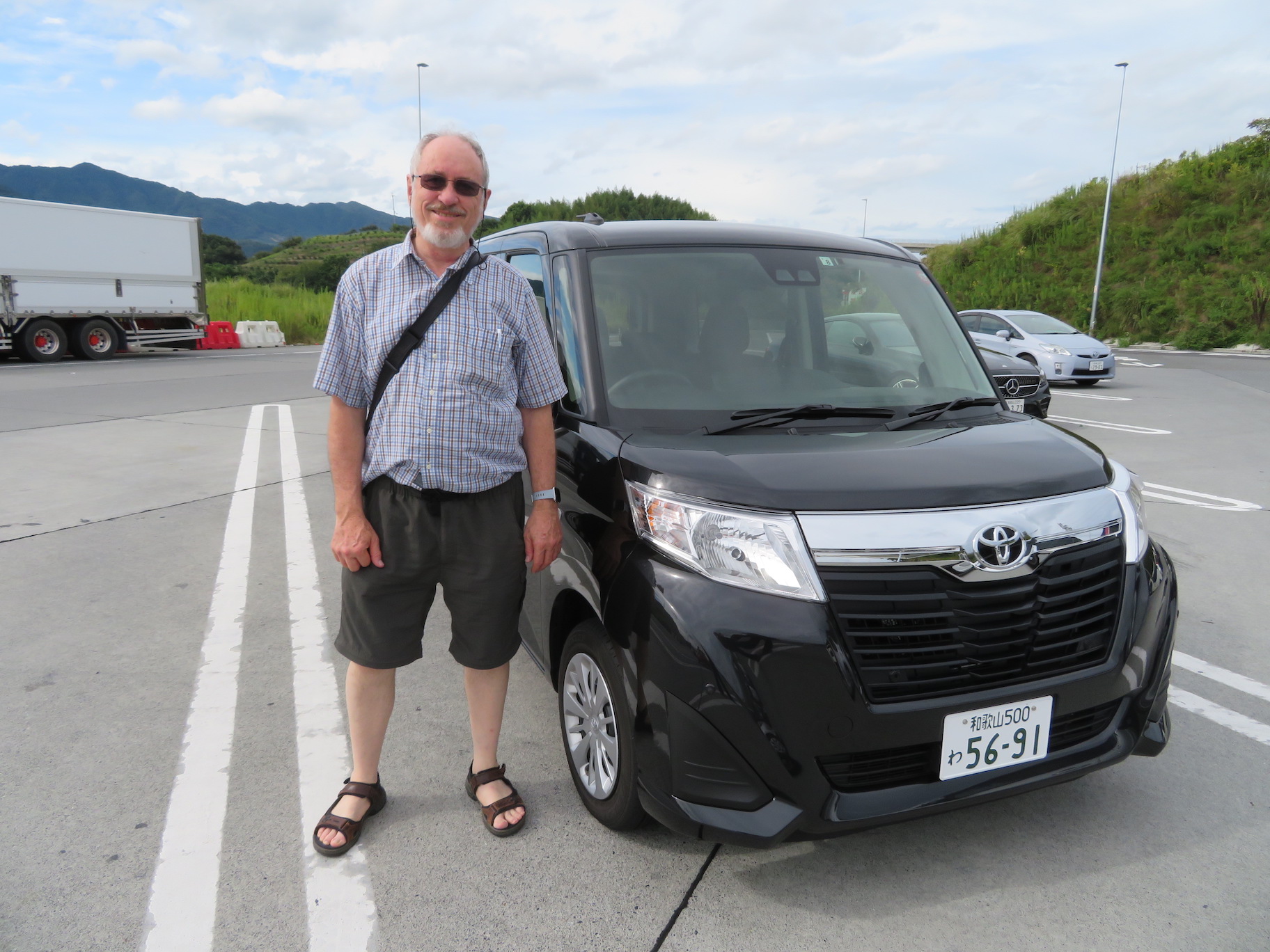
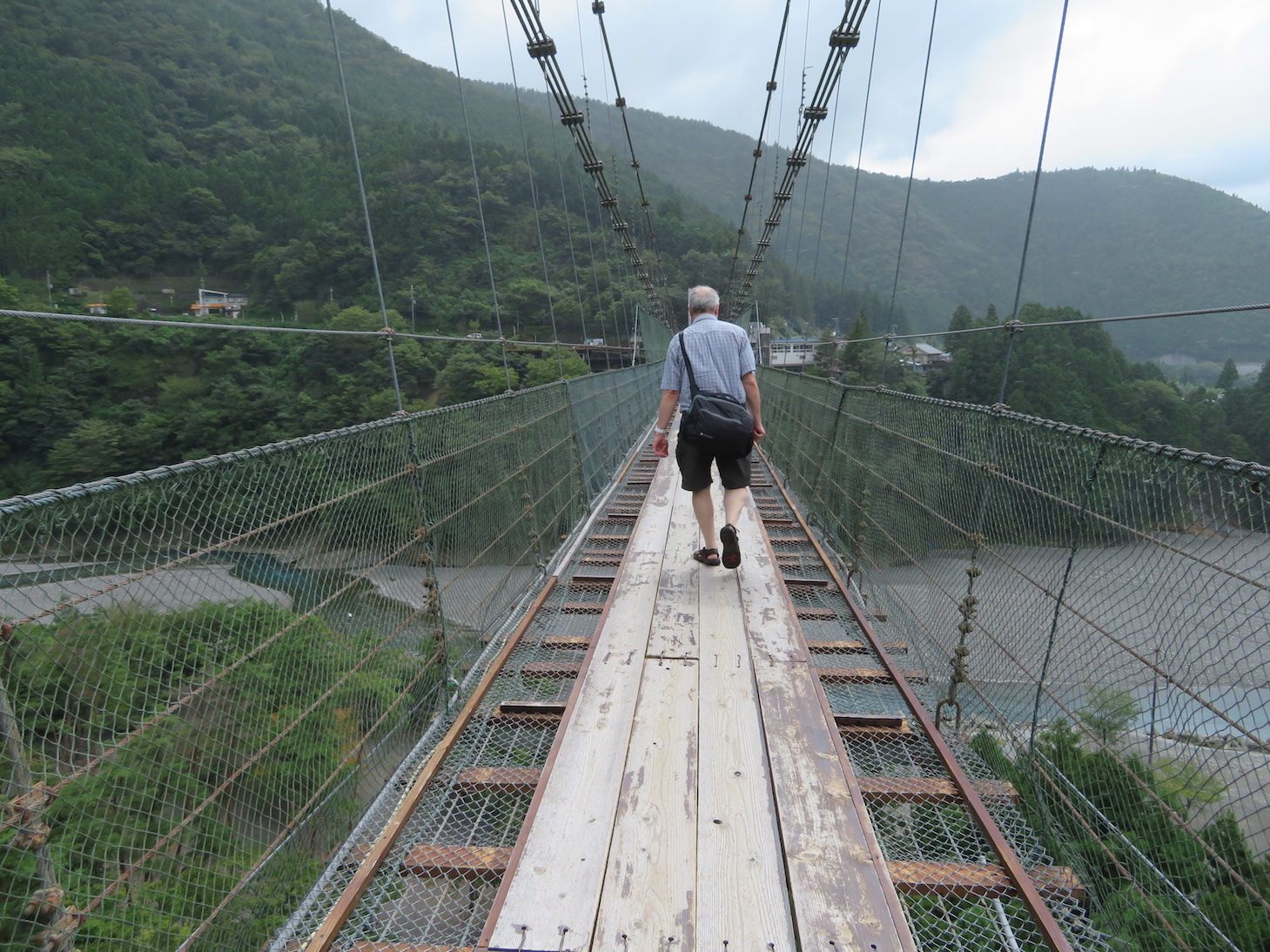
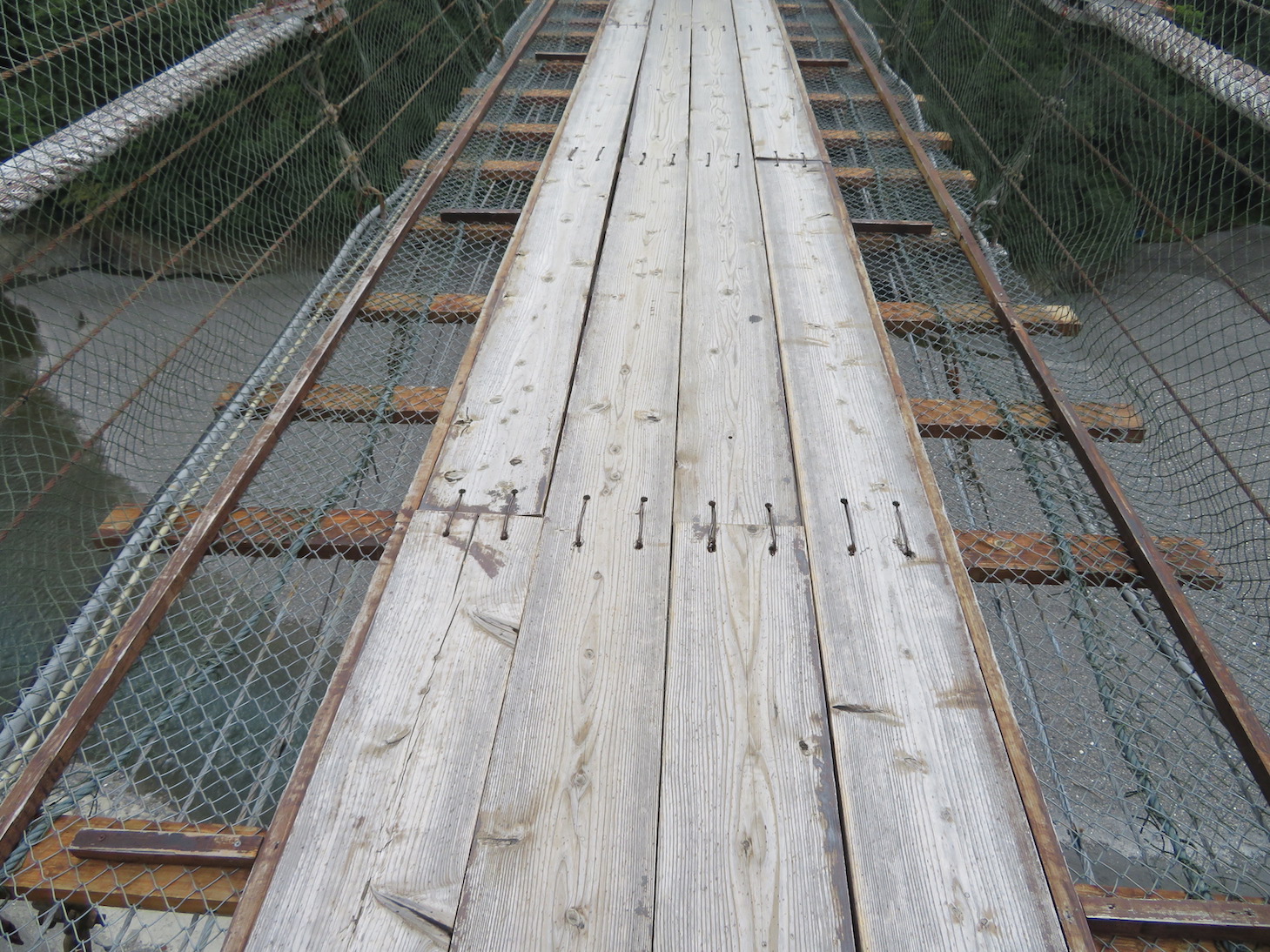
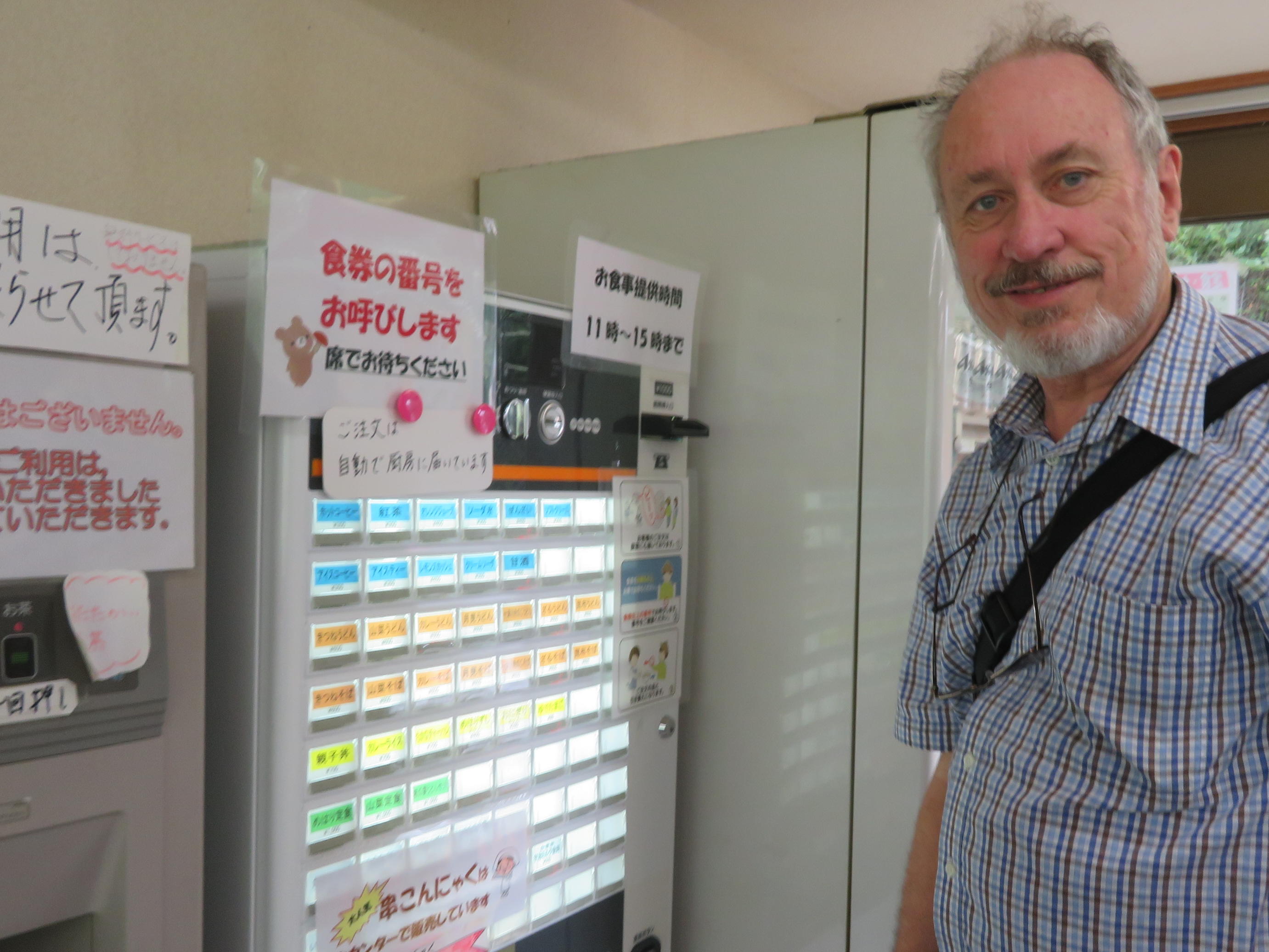
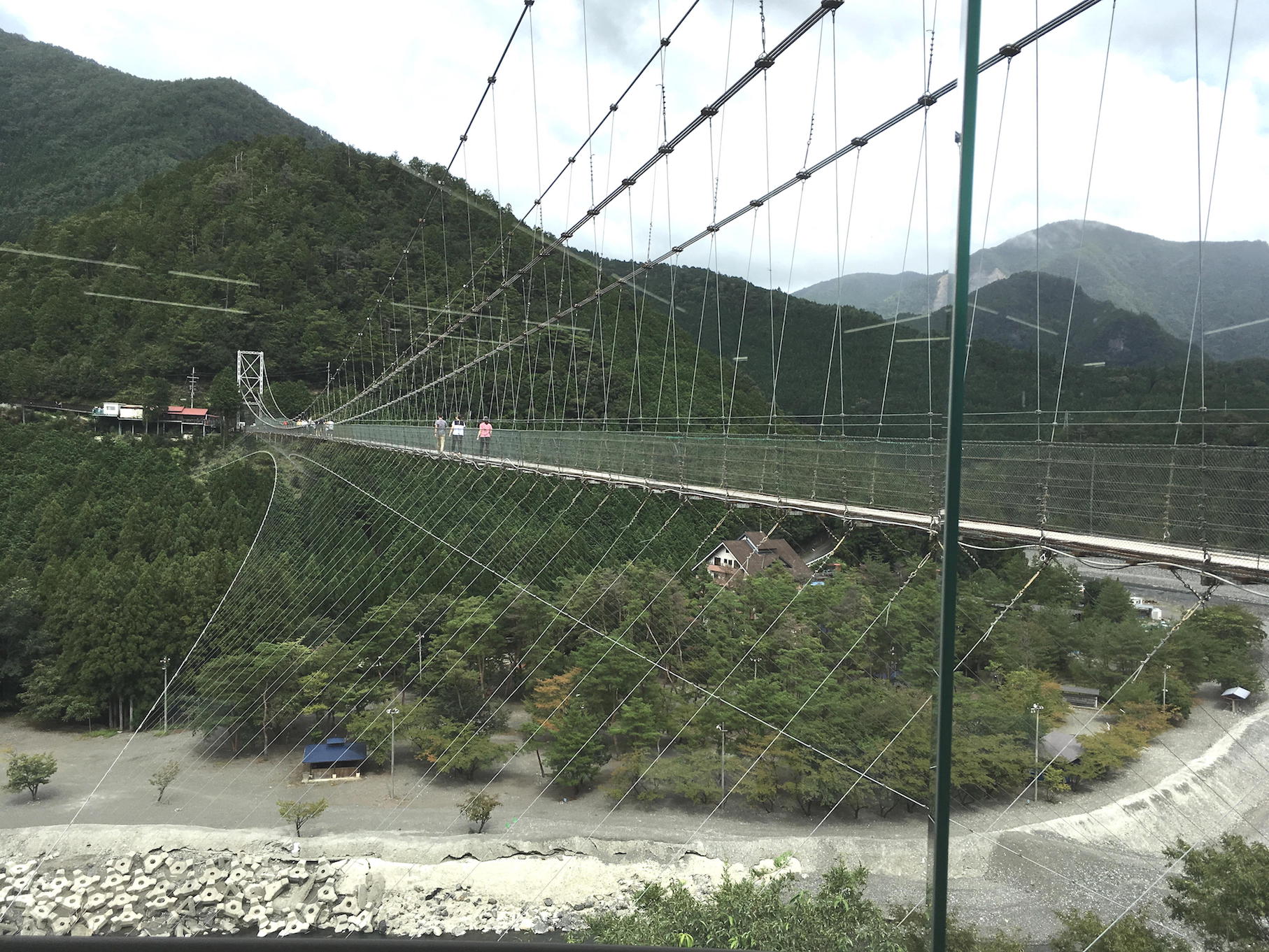
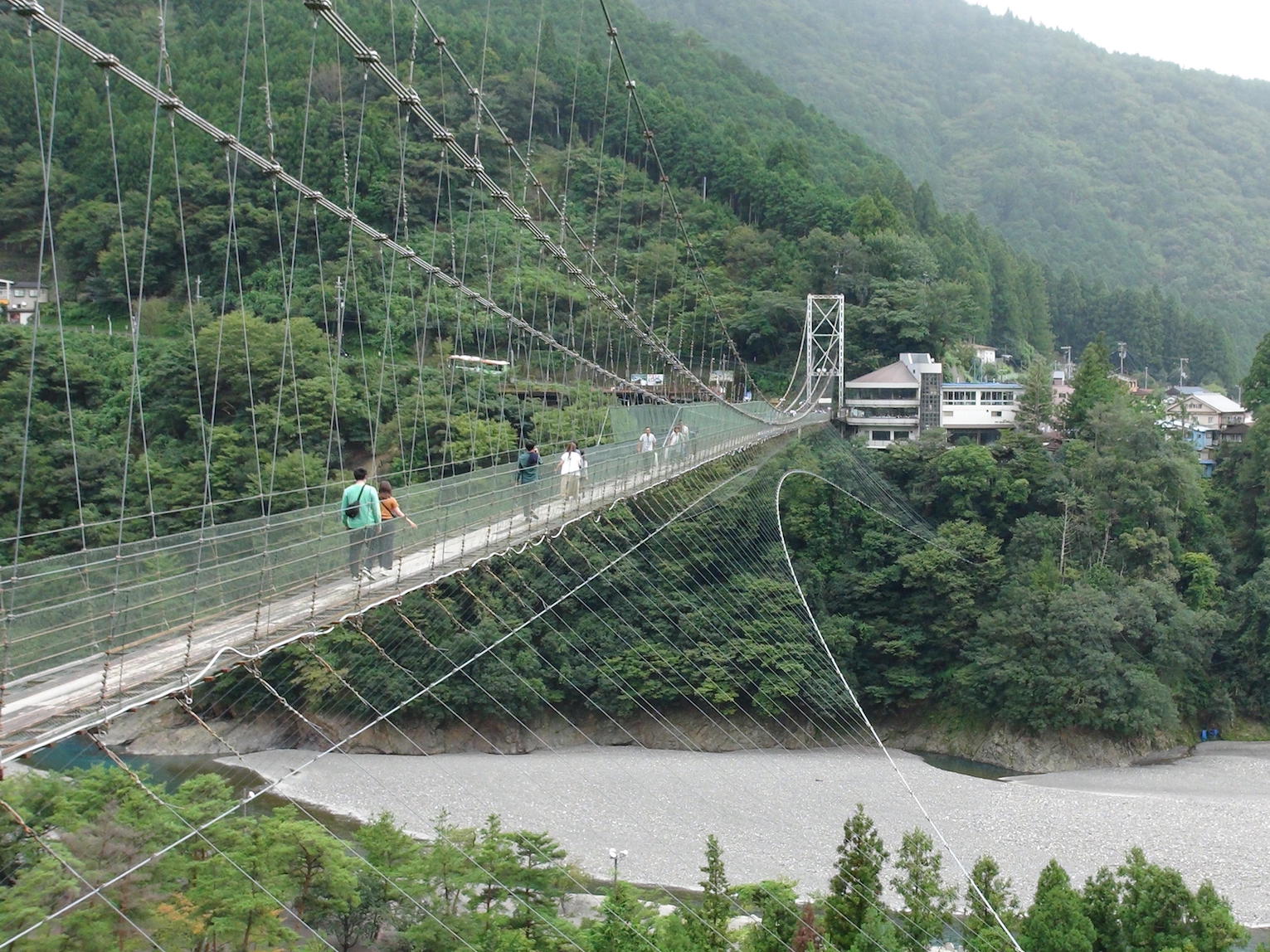





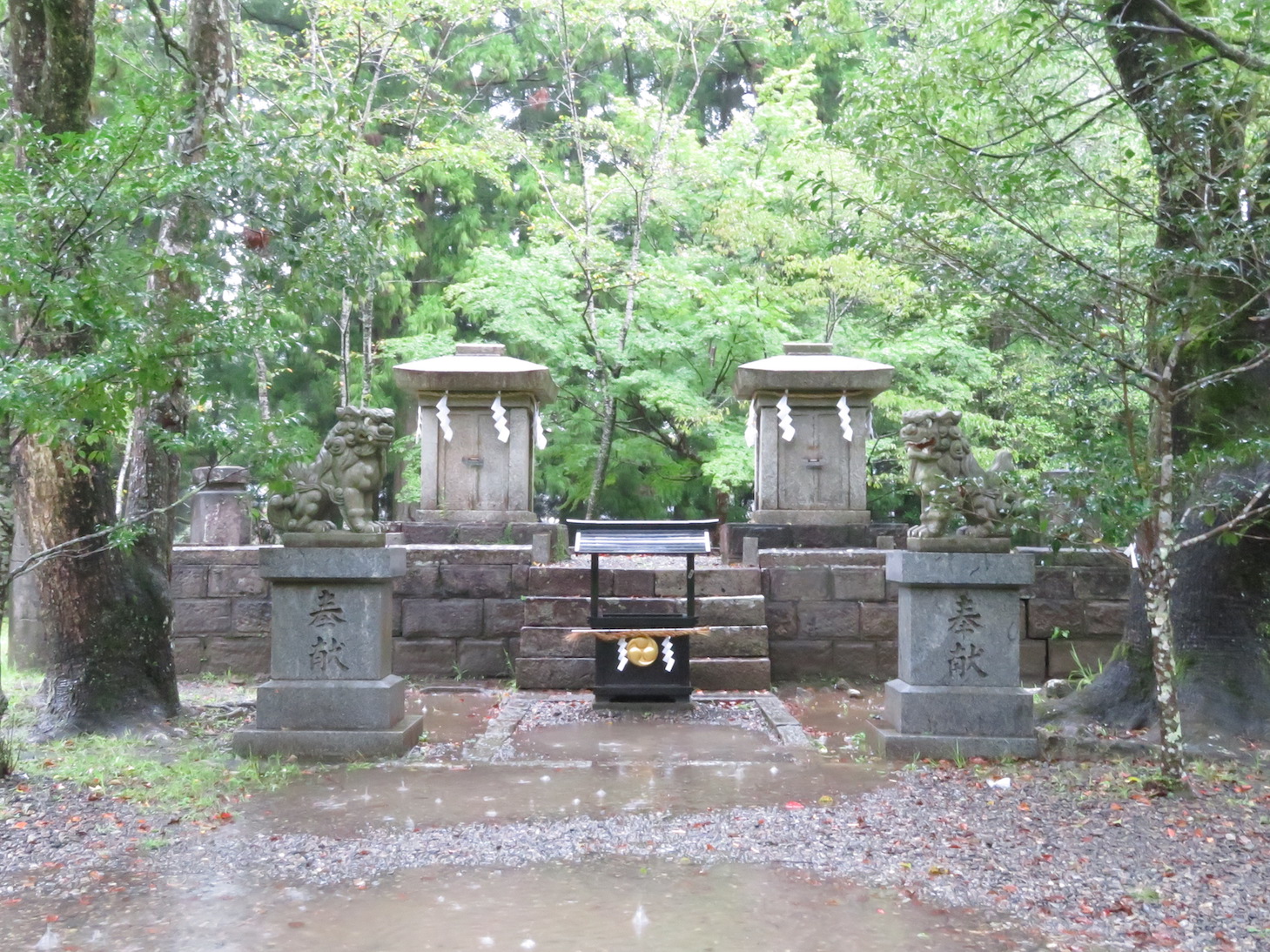


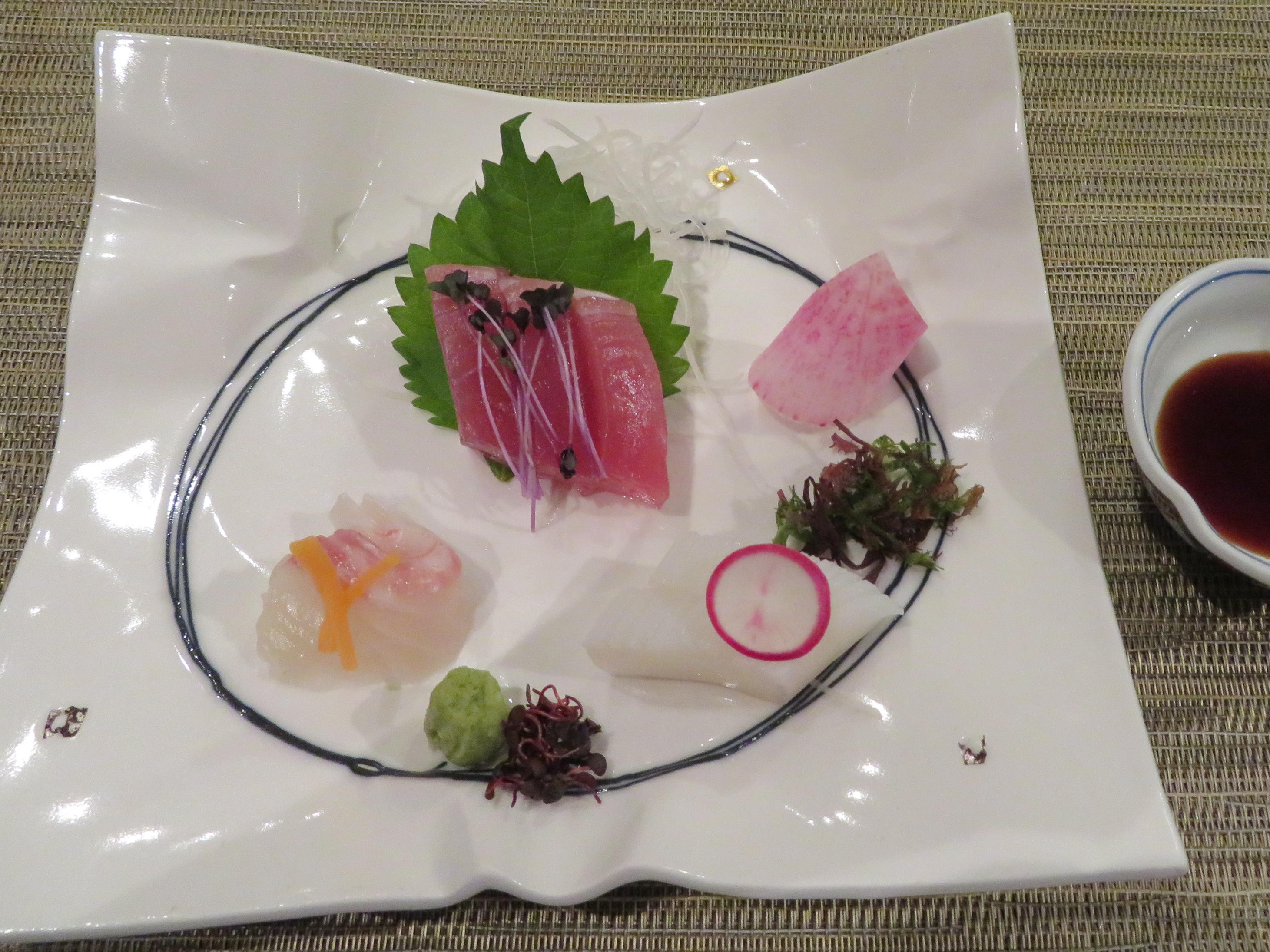

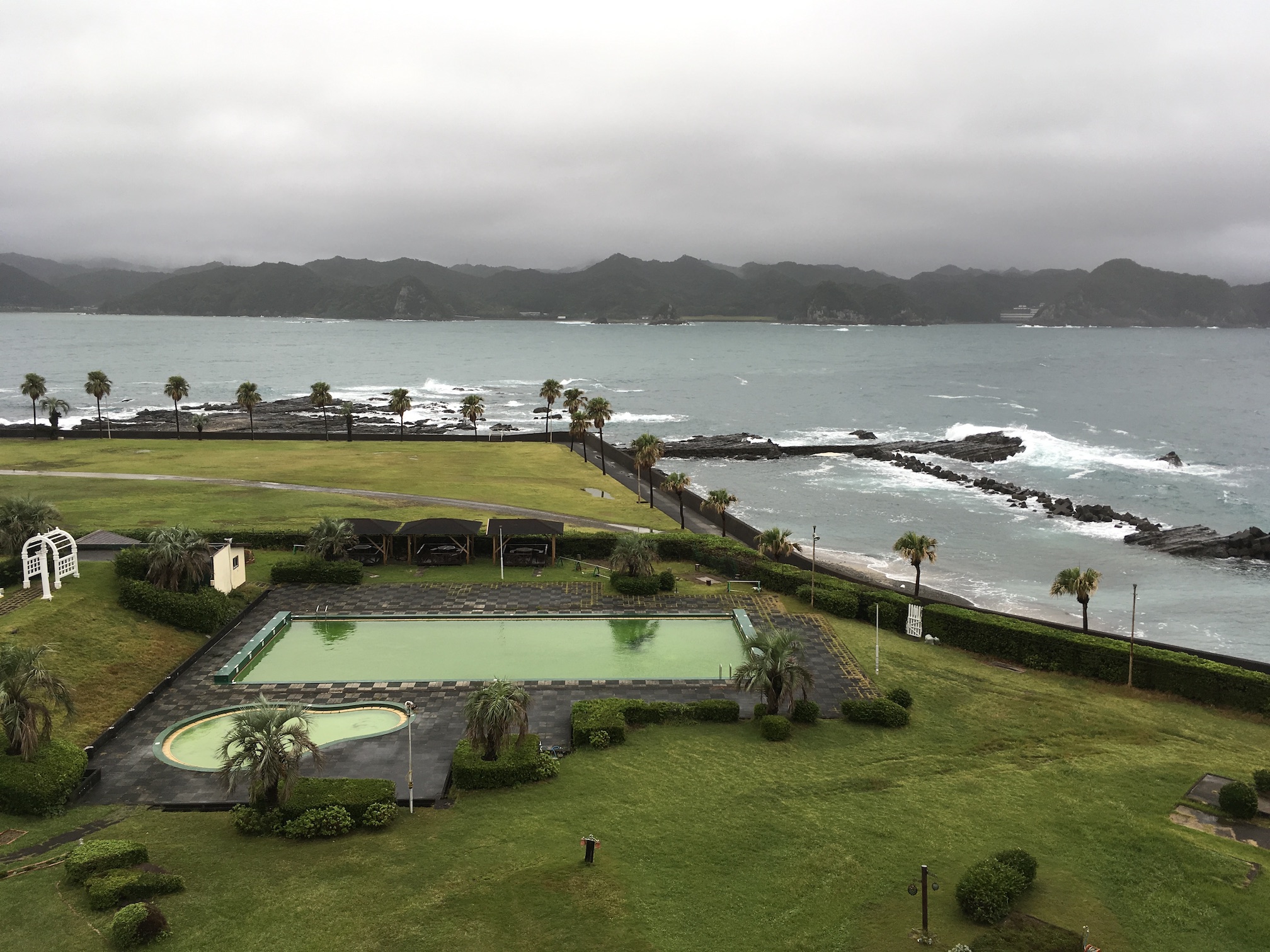

I know that the rain made it difficult for you to get around, but your pictures were even more beautiful and haunting in the misty rain. I especially loved Oyunohara Torii. This is probably a stupid question, but are you staying at an Onsen? Oyunohara means the field of hot water, so I’m assuming that the area is known for hot springs, but then almost every area in Japan is known for hot springs, I also loved the look of that coffee pit stop in the rain. Your Russian roulette lunch ordering was a great story and I’m glad that you got the rice, or else Len would have had to eat the 2 orders of soba or udon. The suspension bridge looked like a fun adventure too. I wonder why you were getting so many odd looks from people about your travel course?
Thanks Carolyn. You are right. The rain does wonders for photography often.
We are staying at a ryokan hotel. It does have onsen but I don’t think it’s a natural one. I don’t do onsens, which shocked the porter here, but steamy water is a no-no for my skin.
Re the looks about our route, they were surprised we were taking the slower, windy, mountainous route – but of course we want to see the countryside.
How super to be travelling in a place where rain doesn’t render the day intolerable ! 🙂
Those boxy cars would be so suitable for here, rather than the preponderance of huge SUVs that all our mums foolishly believe to be safer.
How in the name of all the gods can you two be so fit as to be able to live in a tatami room ? – I couldn’t sit at a table, let alone lie on a futon. But then, you’re normal shapes, I s’pose …
The bridge is a beautiful piece of engineering, eh ? – work of art. Typical Japanese perfection – which is not everywhere, she added hurriedly. [grin]
I love bridges and photographing them M-R. I’ve had to miss so many on this trip because we’ve been driving and not able to stop.
I love tatami mat rooms, but it probably won’t be long before we give them up 🙂 I do a lot of yoga!
Re the route: I’m just wondering….
Here in Victoria, the wold-famous scenic route is the Great Ocean Road. It’s breath-taking.
But…
There are now so many international tourists using it, especially Chinese who do what you’re doing but in rental mini-buses, and they don’t understand the language or the warning signs (e.g. about landslips in the rain) and they are not used to driving on the right side of the road (i.e. the left) and there is a rising number of terrible road crashes, with multiple fatalities. I love the road, but it’s very risky now.
Yes, Lisa, I did wonder if they didn’t know we are comfortable driving on the left side of the road, given most visitors here wouldn’t drive on “our” side of the road. It’s one of the pleasures of driving here, really. We don’t have to worry about that! But you do have to try to understand signs, eg their Stop sign is a triangle, like our Give Way.
Hahah yep, oyakodon means parent-and-child donburi and it’s all about the chicken and egg, hilarious hey? ALSO I MISS CANNED JAPANESE COFFEE!! I’d’ve been able to point you to the right ones too; Nicholas and I made a good study of the different types 😉
The bridge is super cool! Most of the photos aren’t loading for me, but I can see those ones at least 🙂 xo
Yes, I thought it meant chicken and egg, Hannah.
Re the coffee, it wasn’t choosing the coffee that was the issue, but which buttons to press for sugar and for milk. This was in a big vending machine but it made coffee too, as well as vended canned stuff.
We are not sure what the issue with the photos is. Often the first one doesn’t load for us.
Aha, they’ve loaded now! Are the long pillows on the bed for having between your knees?
Great Hannah. Re the pillows. No idea. We are just glad we had our own, unlike our last European trip.
Favorites – the bird and frog videos! Truly everything was scenic and lovely to see. The bridge was a bit daunting but how could you not give it a go! I am not really surprised that your dispositions invite friendly and helpful conversation and I love that you are having those kind of experiences with the local population. I think that kind of thing just makes the whole day more special in general. Especially when the discomfort of rainy weather can put a damper on sightseeing. I saw the little lightening bolts on one of the shrines again, loved that I now know their purpose. I am also a fan of fungi! Thanks for that pic!
Sorry I am behind and trying to catch up!
I knew these photos would be up your alley Trudy! Glad you liked them.
No need to apologise for catching up. This is not homework!!
So lovely with those soft greens and greys, saturated ground and misty surrounds. That is quite a suspension bridge! Your sleeping accommodation looks welcoming and cosy. The food looks so fresh and beautifully presented… was there enough to eat though?
Thanks Mary. I enjoyed looking at these photos again in order to answer your question. Yes we did have enough to eat. It looks small , I agree, but it was surprisingly filling. We are definitely not starving here – at any meal!
The greens are lovely, particularly with the soft rain.